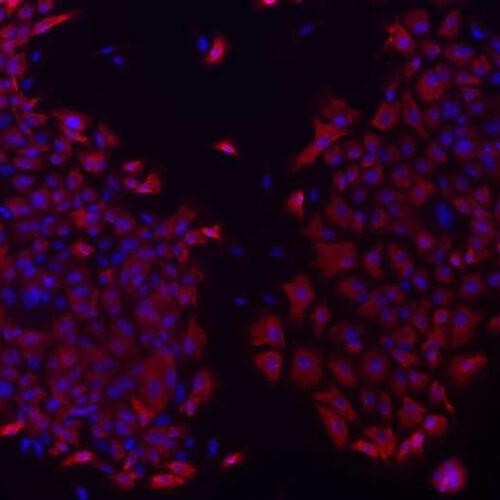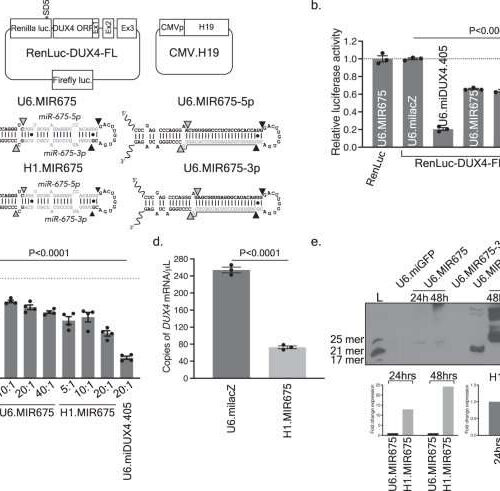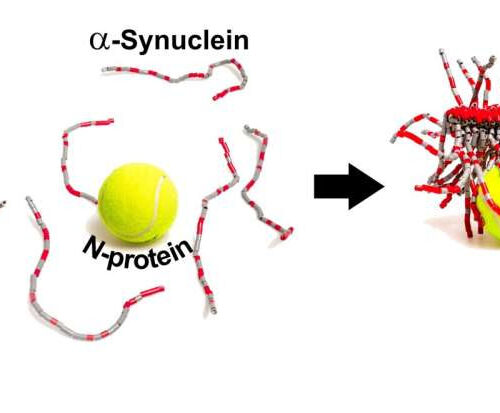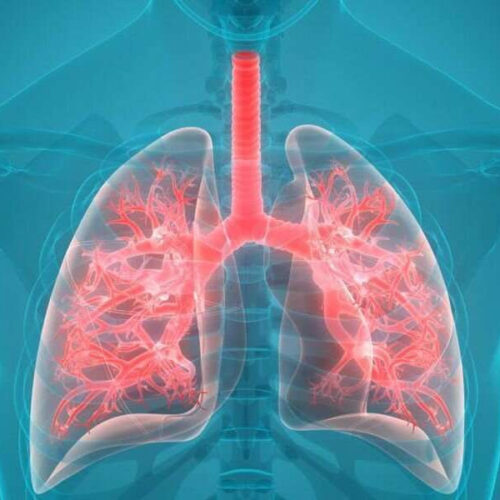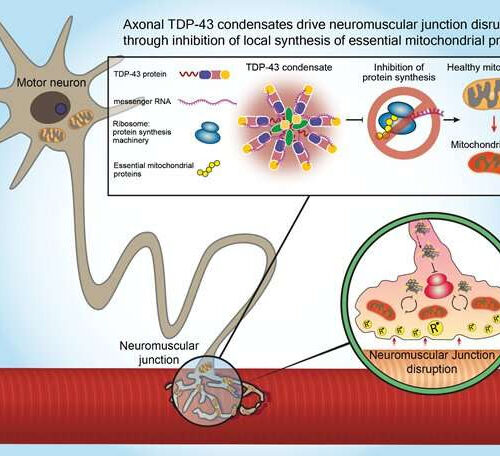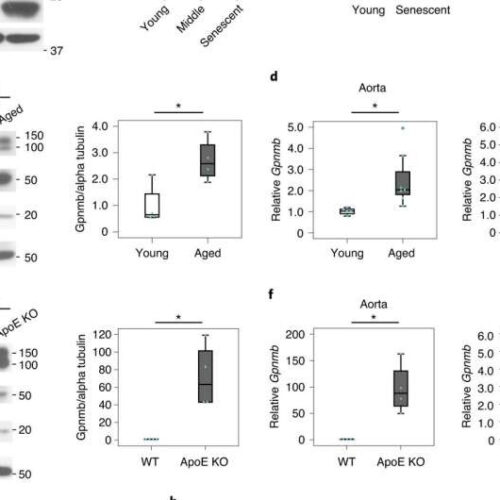DUKE UNIVERSITY MEDICAL CENTER DURHAM, N.C. – With numerous recent studies demonstrating that antibiotics work as well as surgery for most uncomplicated appendicitis cases, the non-surgical approach can now be considered a routine option, according to a review article in JAMA. The finding — appearing Dec. 14 and led by Theodore Pappas, M.D., professor in the Department of...
Chronic obstructive pulmonary disease: A genetic mutation confirmed as predisposing factor
by Pasteur Institute Airway basal cells from an animal model in culture marked red by cytokeratin 14 (a specific marker). The nuclei are stained blue with DAPI, a fluorescent molecule. Credit: Integrative Neurobiology of Cholinergic Systems Unit at the Institut Pasteur In 2019, the WHO positioned chronic obstructive pulmonary disease (COPD) third in the global...
Human microRNA inhibits expression of pathogenic gene underlying facioscapulohumeral muscular dystrophy
by Nationwide Children’s Hospital Fig. 1: miR-675 targets the DUX4 ORF and 3′UTR. a RenLuc-DUX4-FL dual-luciferase reporter and CMV.H19 constructs, and U6.MIR675, H1.MIR675, U6.MIR675-3p, and U6.MIR675-5p miRNAs. RenLuc-DUX4-FL contains DUX4 ORF and 3′UTR sequences fused to Renilla luciferase after the stop codon. Exons 1–3 are indicated (Ex1,2,3). *SD5 indicates silent mutation of a cryptic splice...
SARS-CoV-2 protein interacts with Parkinson’s protein, promotes amyloid formation
by American Chemical Society The SARS-CoV-2 N-protein can interact with α-synuclein in the test tube and help it form amyloid fibrils, a hallmark of Parkinson’s disease. Credit: Adapted from ACS Chemical Neuroscience 2021, DOI: 10.1021/acschemneuro.1c00666 Case reports of relatively young COVID-19 patients who developed Parkinson’s disease within weeks of contracting the virus have led scientists...
Strategies compared for ruling out pulmonary embolism
(HealthDay)—Diagnostic strategies for suspected pulmonary embolism (PE) with pretest probability-dependent D-dimer thresholds have the highest efficiency and highest predicted failure rate, according to a systematic review and meta-analysis of individual patient data published online Dec. 14 in the Annals of Internal Medicine. Milou A.M. Stals, M.D., from Leiden University Medical Center in the Netherlands, and colleagues...
Researchers identify the biological mechanism causing nerve destruction in the motor neuron disease ALS
by Tel-Aviv University An illustration showing the TDP-43 protein destructively accumulating in motor nerve extensions, specifically in the neuromuscular junctions of ALS patients, where it traps messenger RNA molecules and prevents the synthesis of proteins essential to mitochondrial function. Credit: Tel Aviv University A research group from the Sackler Faculty of Medicine and the Sagol...
For children, young adults with recurrent AML, immunotherapy shows promise
by Julia Evangelou Strait, Washington University School of Medicine in St. Louis Researchers at Washington University School of Medicine in St. Louis have shown, in a small clinical trial, that pre-activated natural killer cells can help some children and young adults with recurrent AML and few other treatment options. Pictured is Weston Robinett, 3, a...
A new vaccine that alters senescent cells in a way that pushes the immune system into removing them
by Bob Yirka, Medical Xpress Fig. 1: GPNMB is a potential candidate of seno-antigen. Credit: DOI: 10.1038/s43587-021-00151-2 A team of researchers affiliated with a large number of institutions in Japan has developed a vaccine that tricks the immune system into removing senescent cells. In their paper published in the journal Nature Aging, the group describes...
New hope for people living with a genetic cause of autism
Fragile X syndrome, or FXS, a leading genetic cause of autism, affects around one in 4,000 males and one in 6,000 females. Its symptoms include increased anxiety, intellectual disability, repetitive behaviors, social communication deficits, and abnormal sensory processing. People living with FXS generally lack the fragile X mental retardation 1 gene, or Fmr1, in their brain cells....
New Technology is One Step Closer to Targeted Gene Therapy
Broad and robust transgene expression across brain regions of marmoset is shown after systemic delivery with engineered capsid. Gene therapy is a powerful developing technology that has the potential to address myriad diseases. For example, Huntington’s disease, a neurodegenerative disorder, is caused by a mutation in a single gene, and if researchers could go into...

